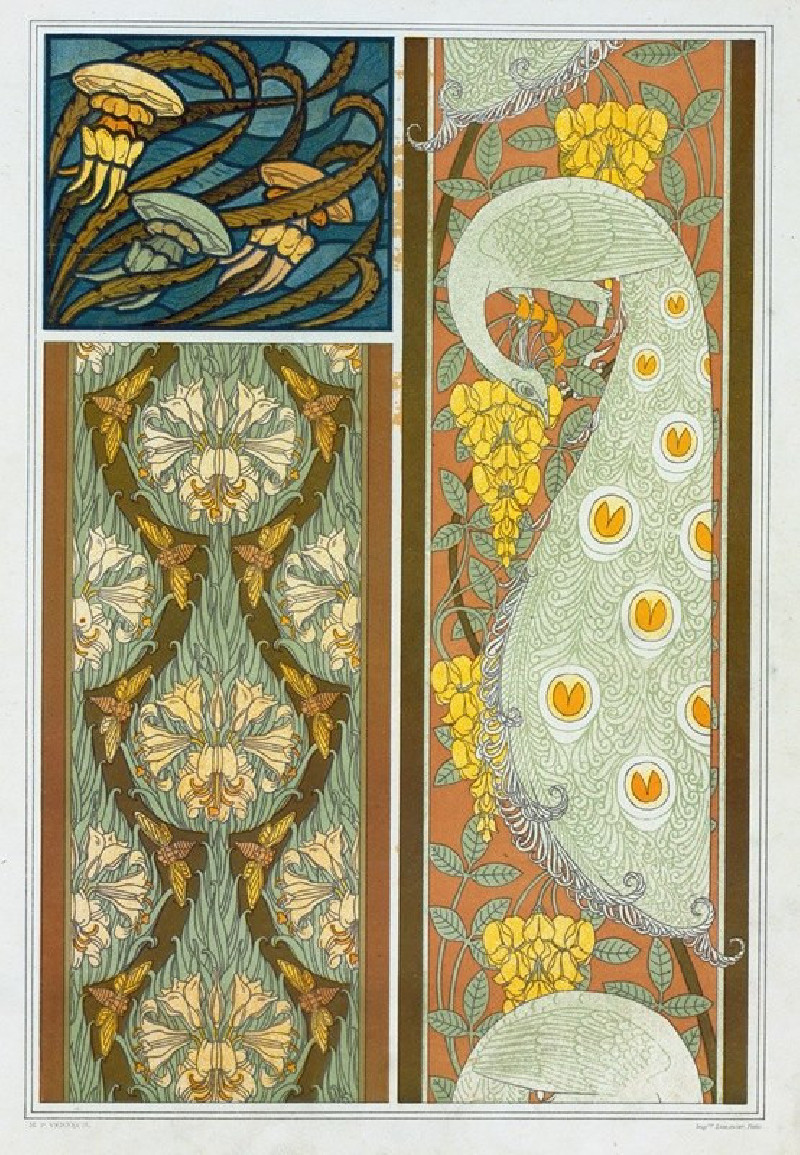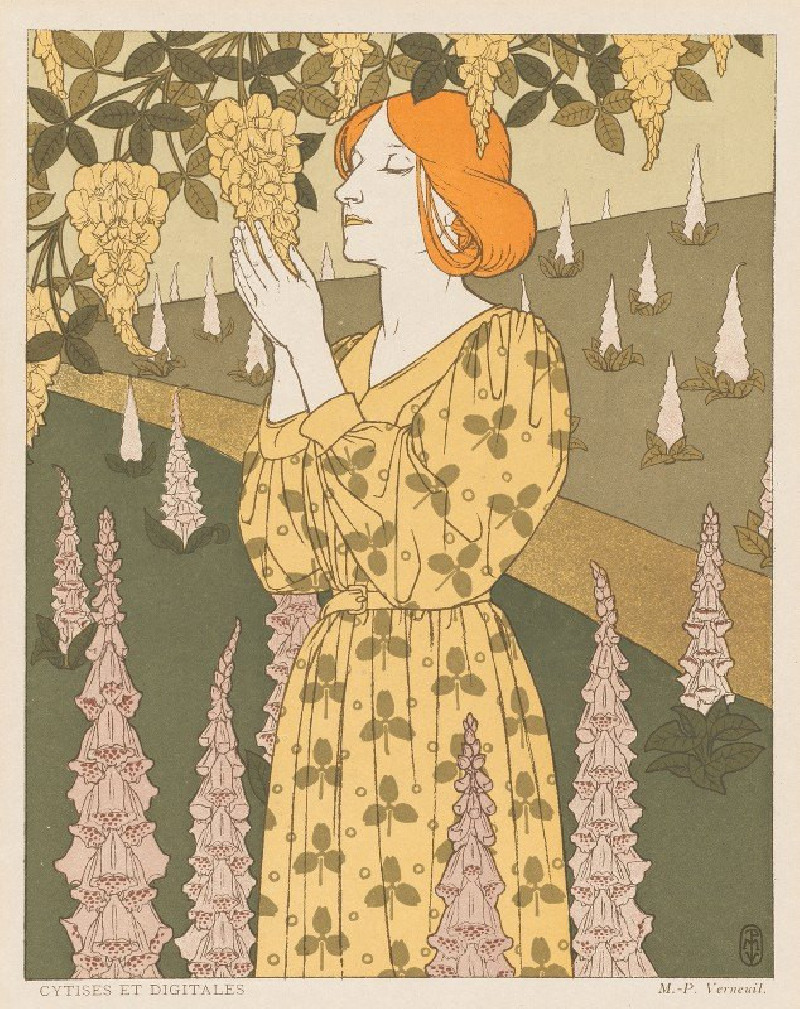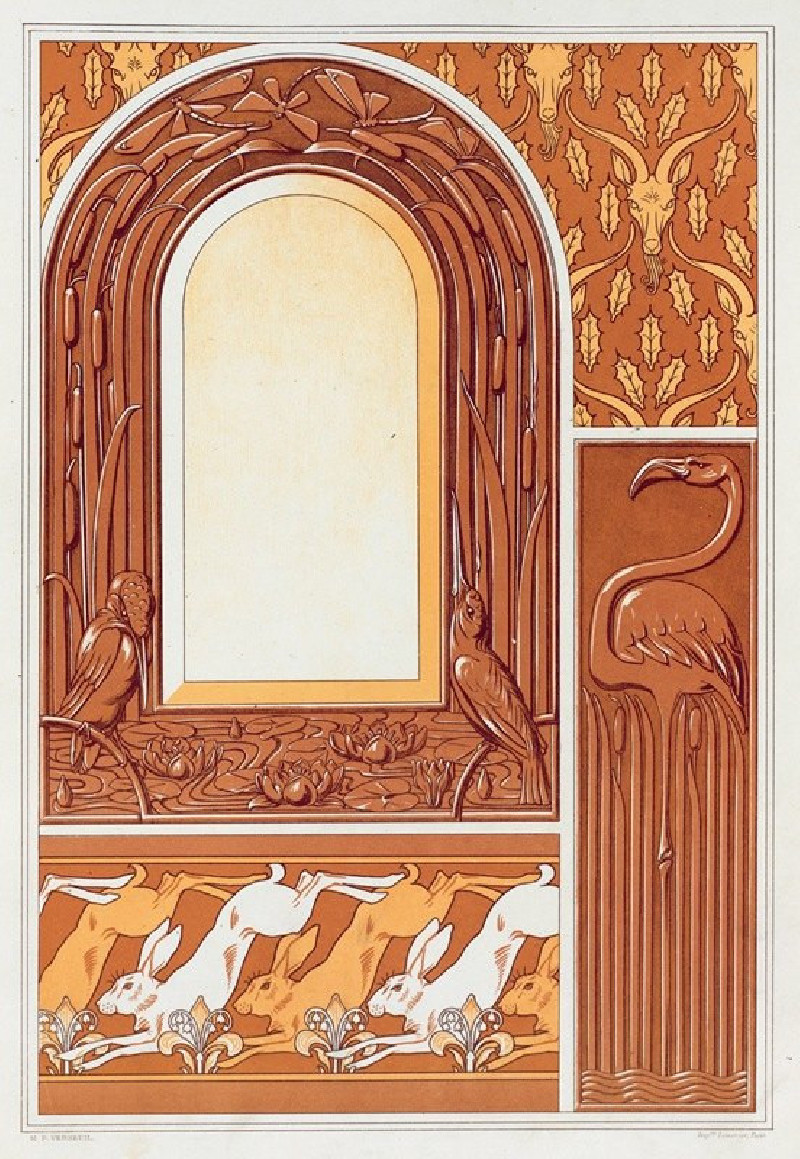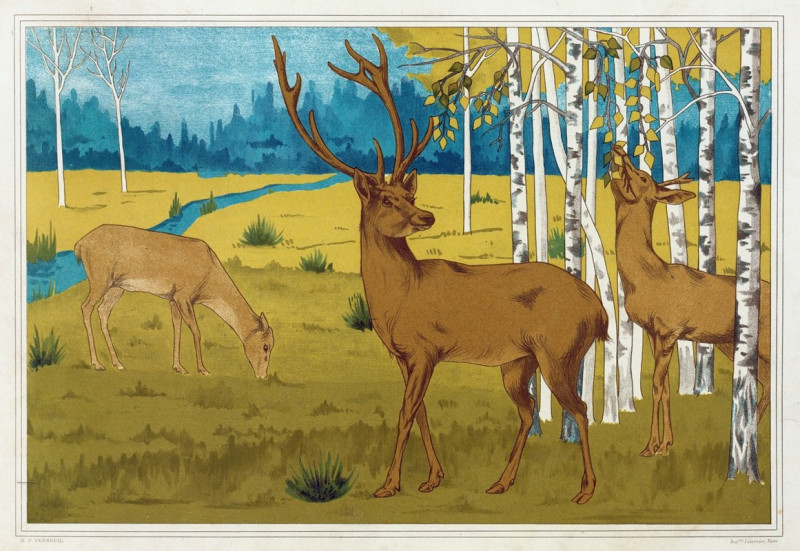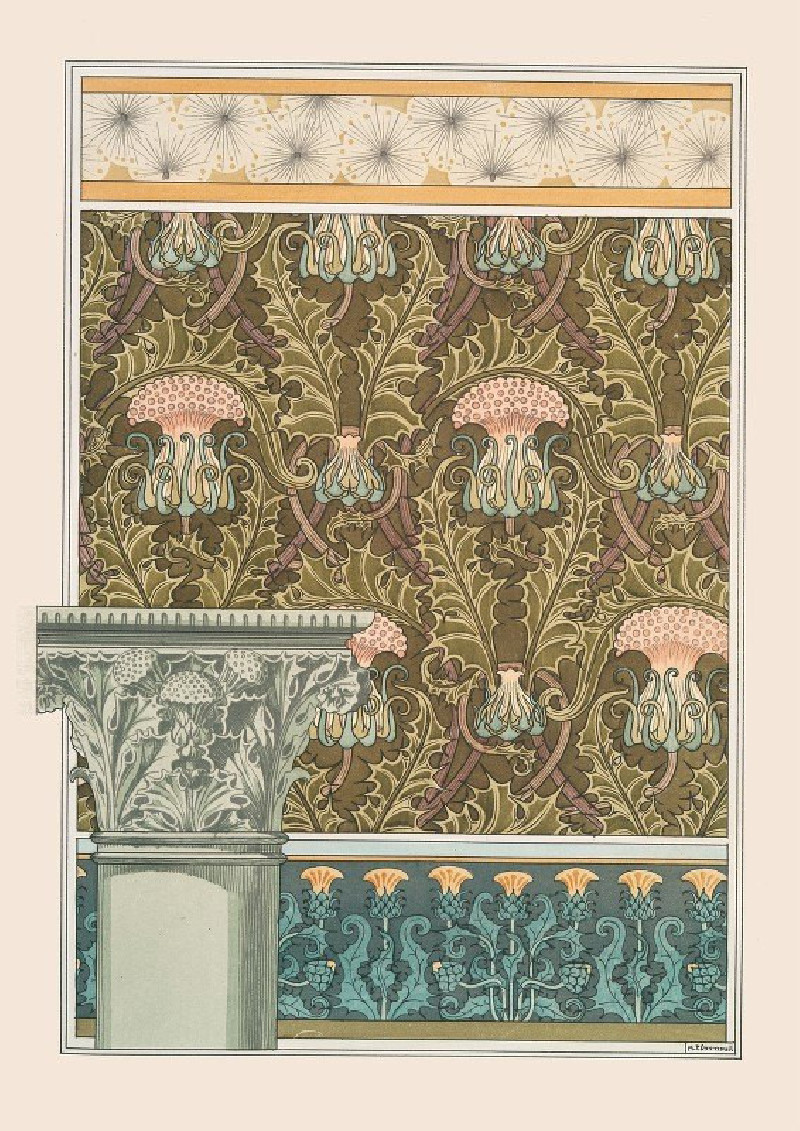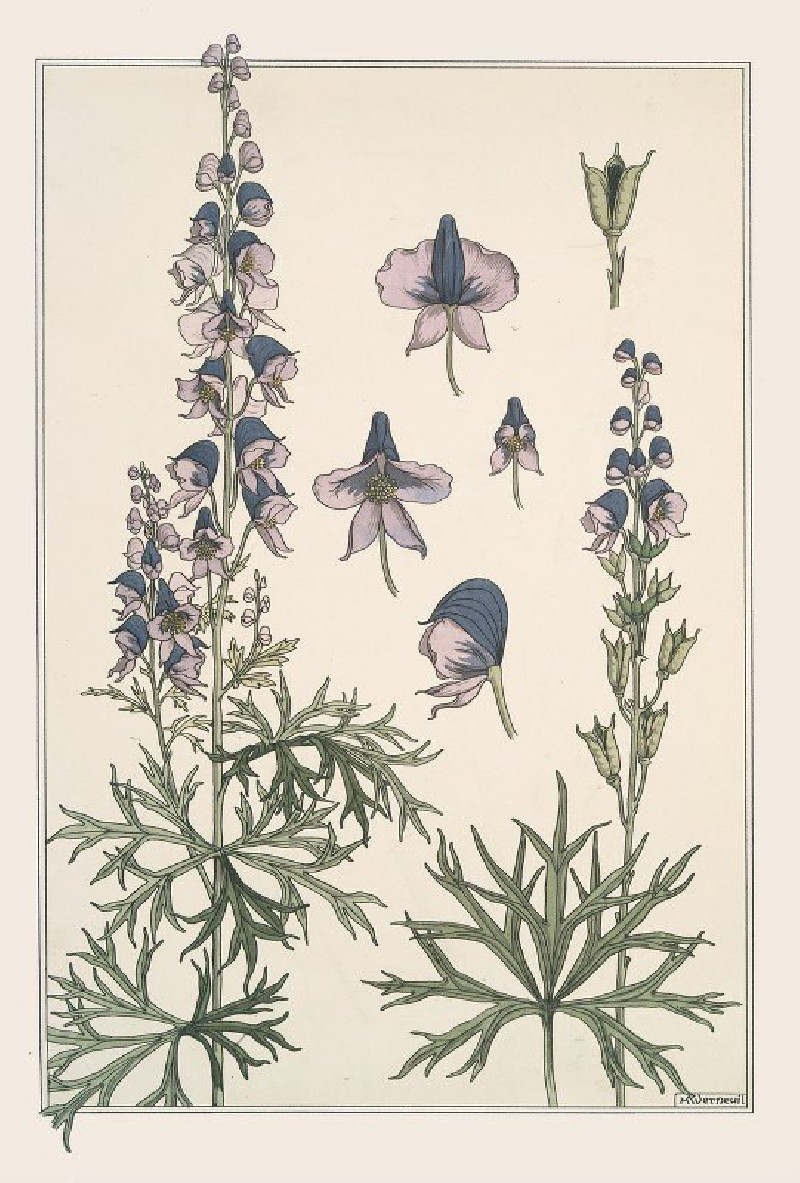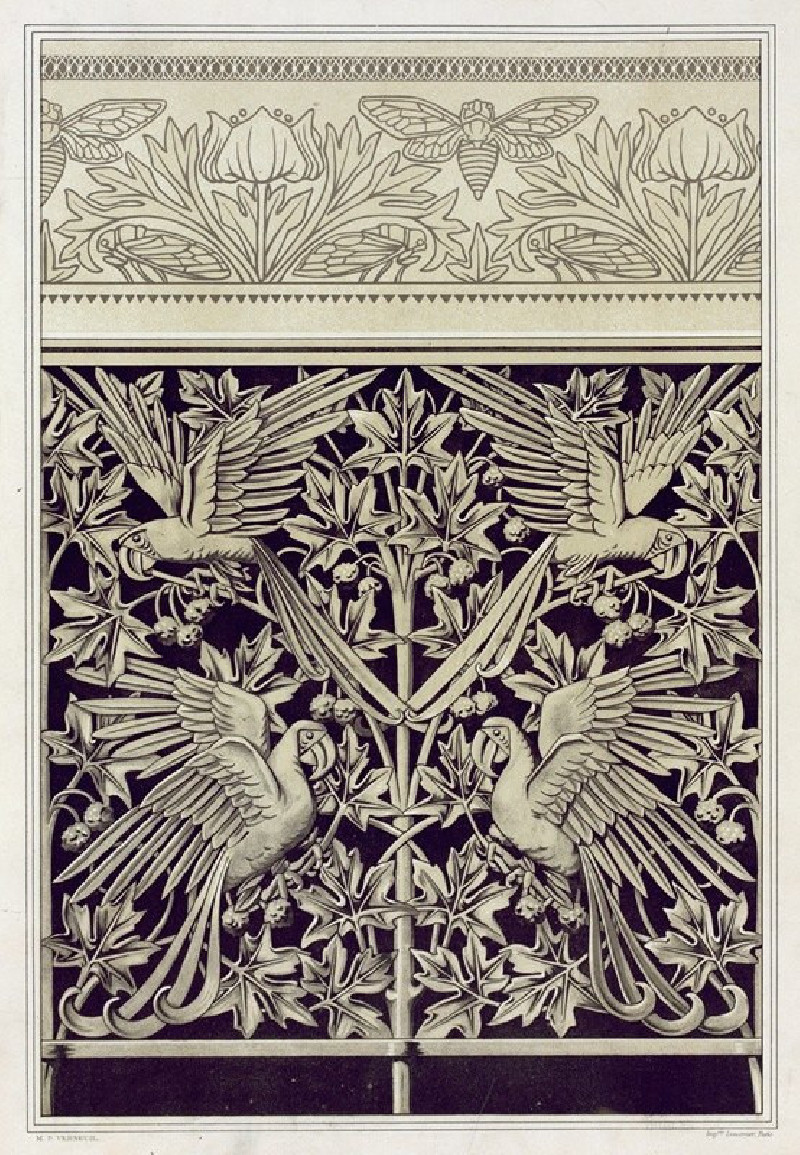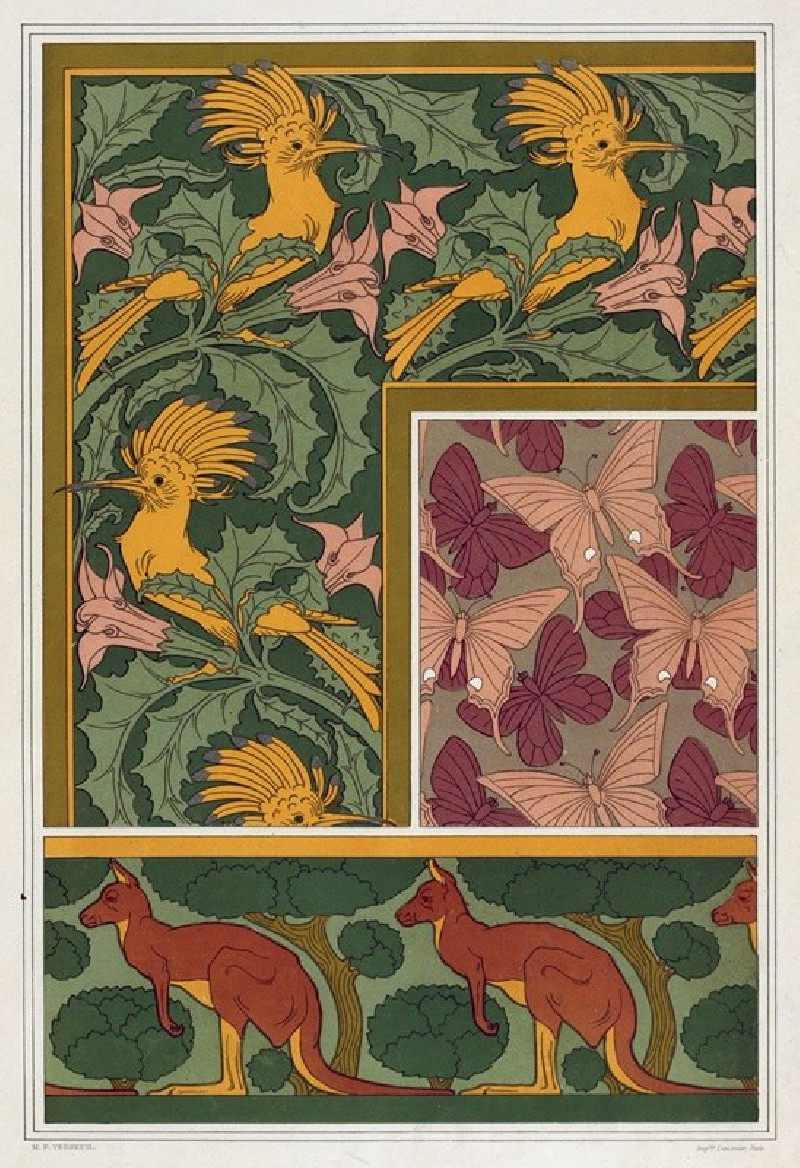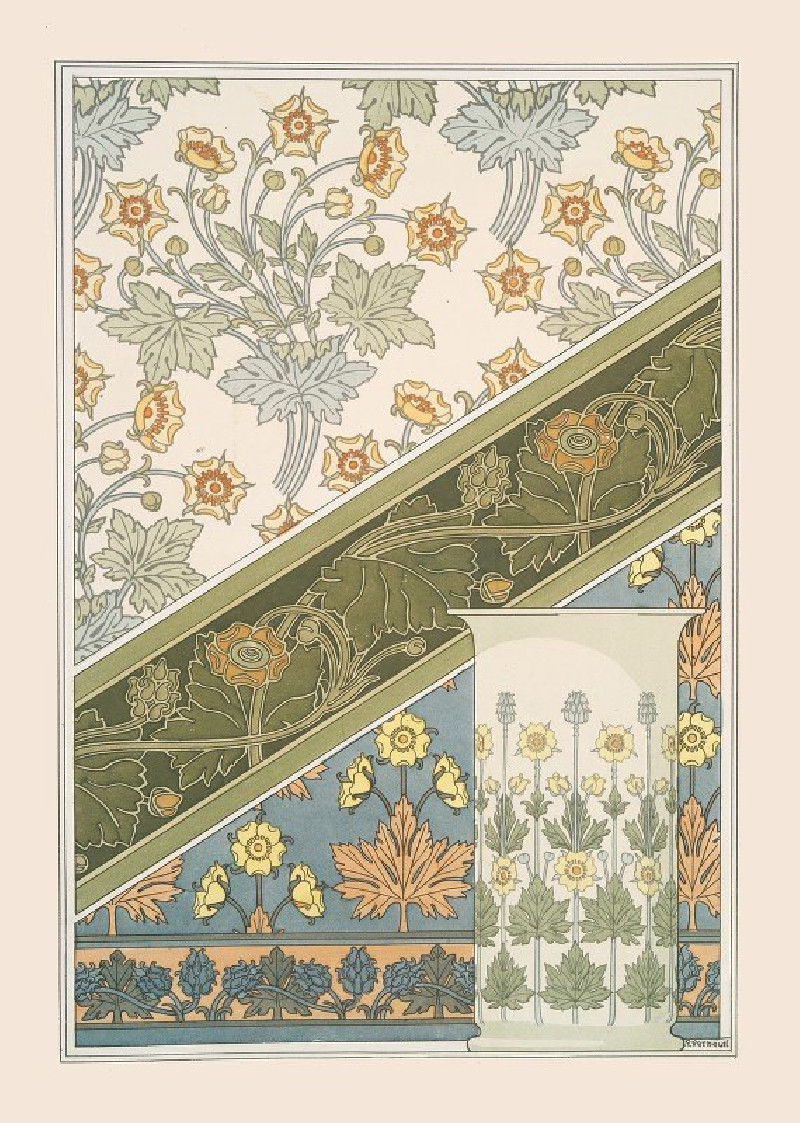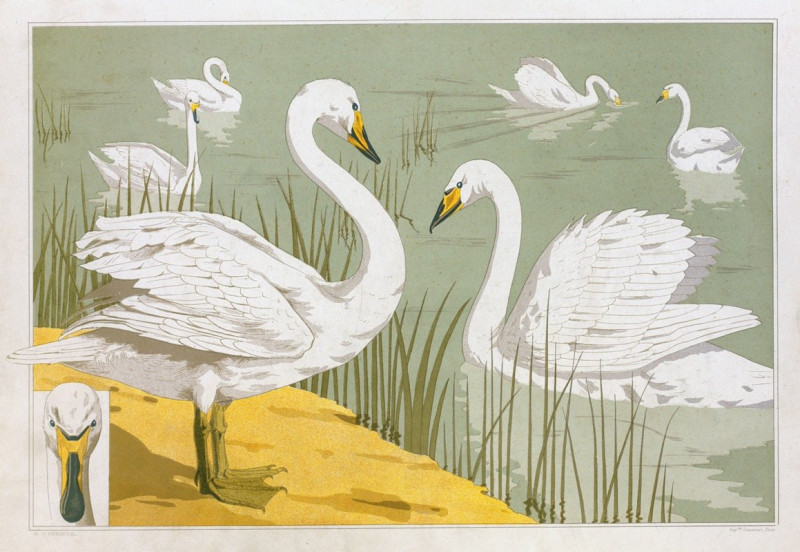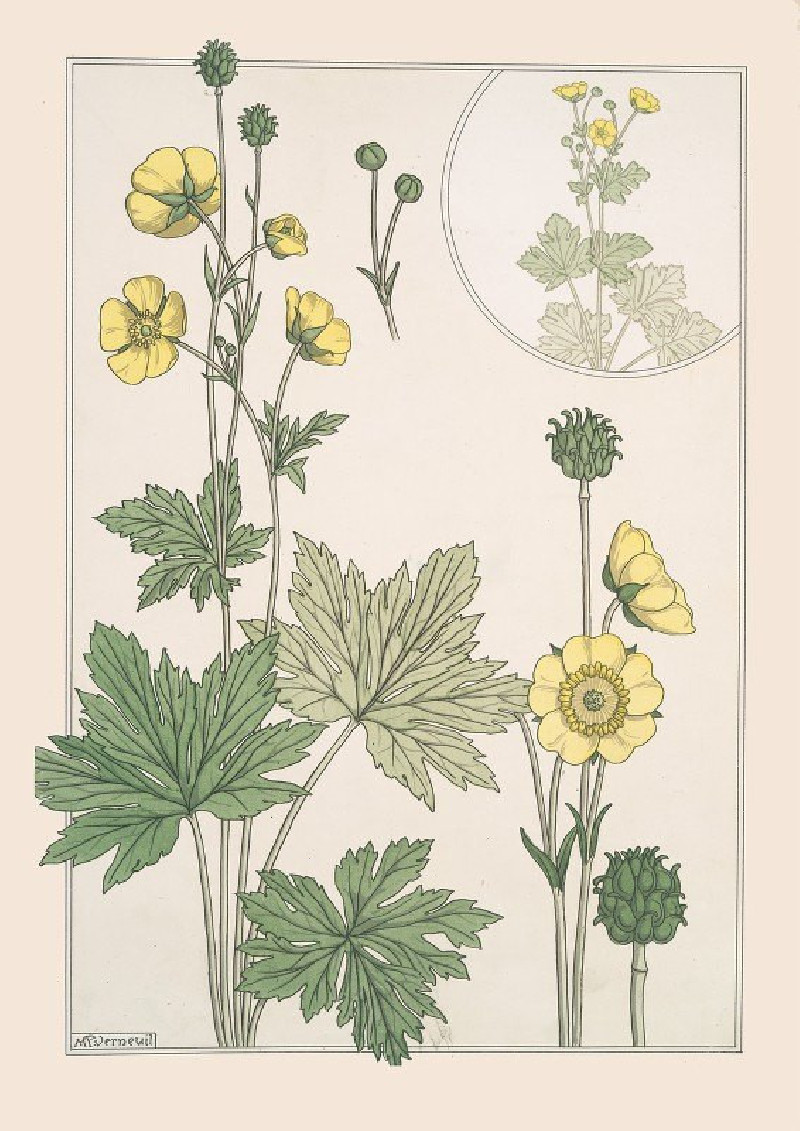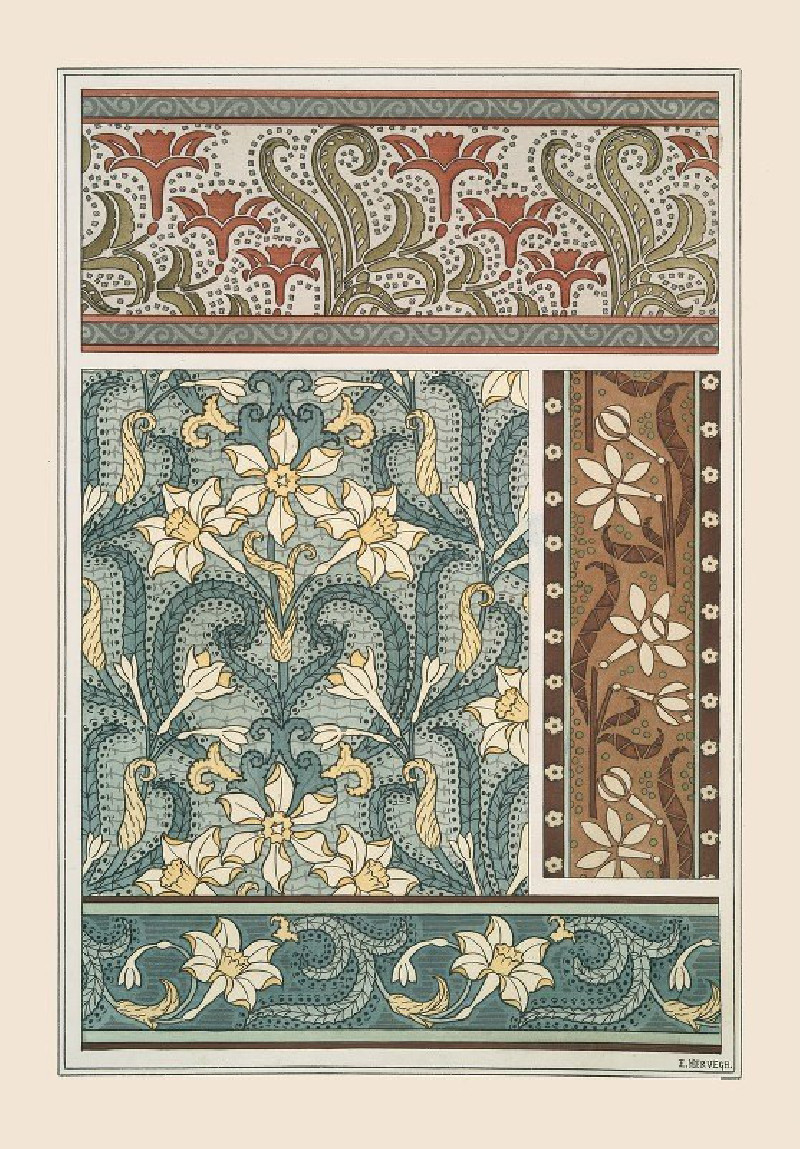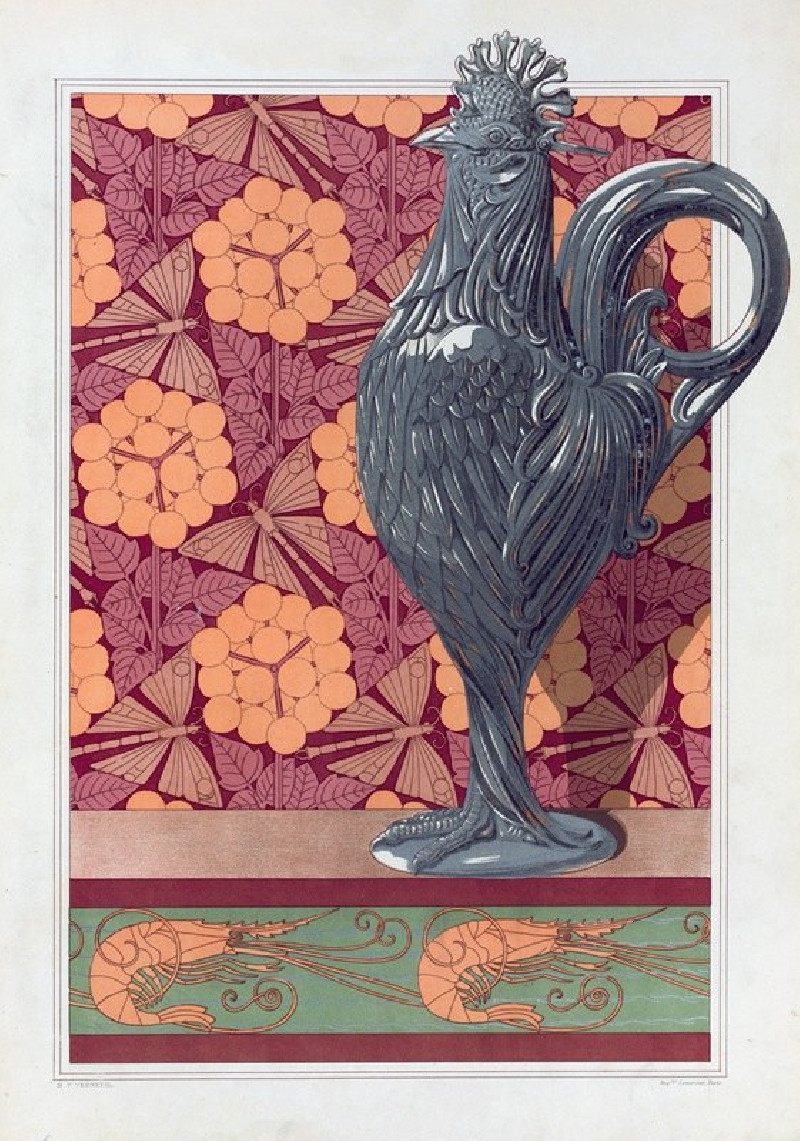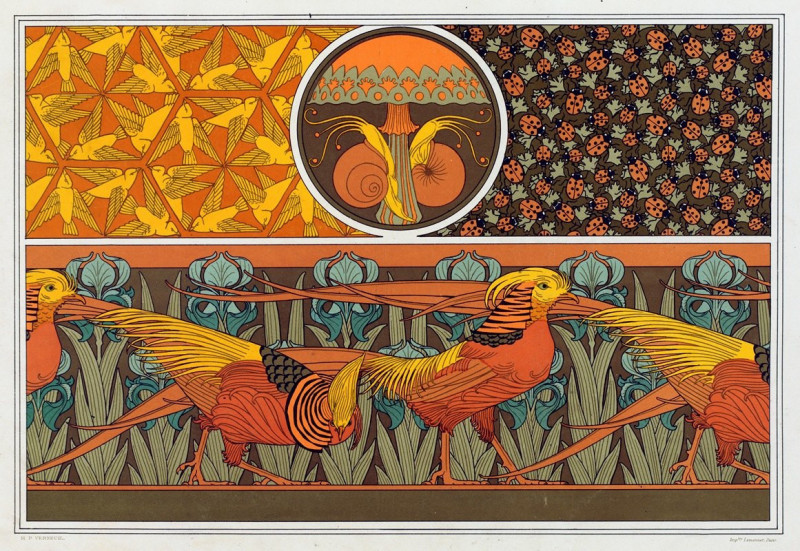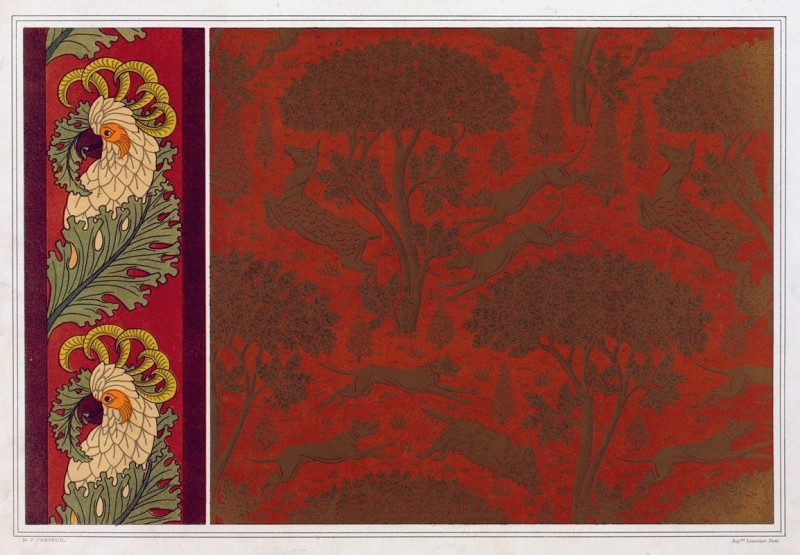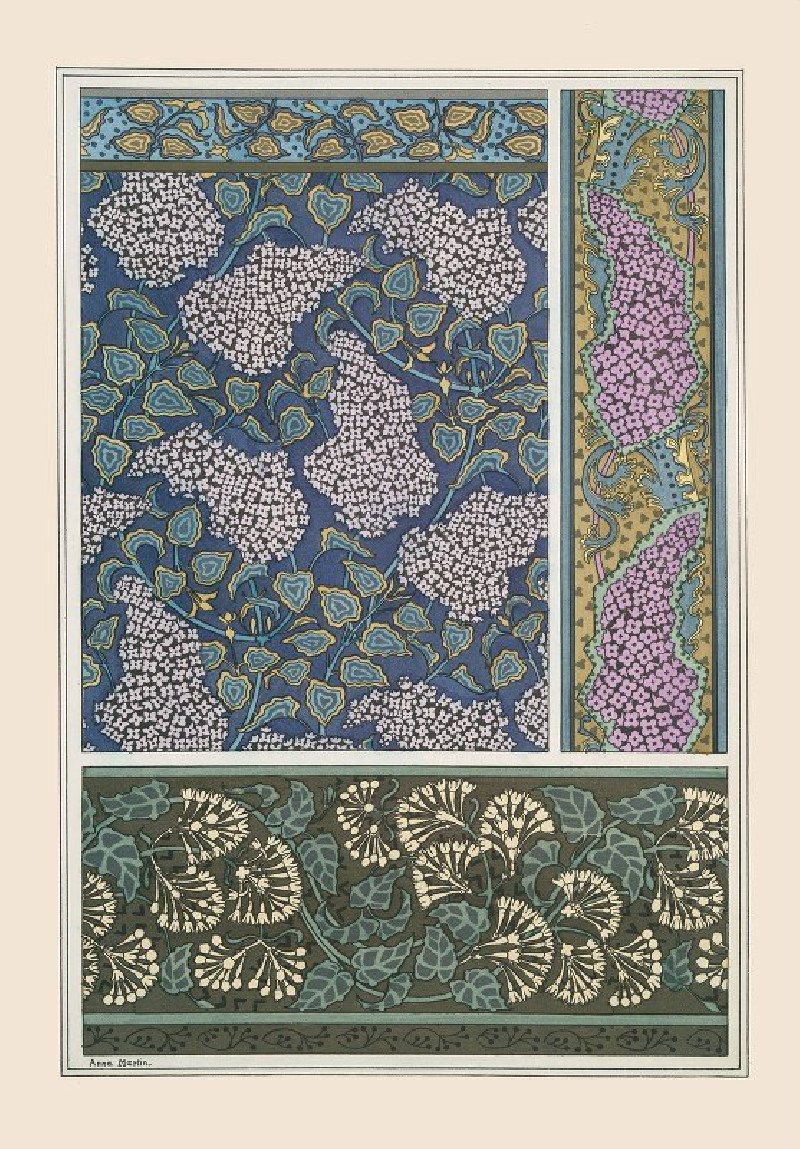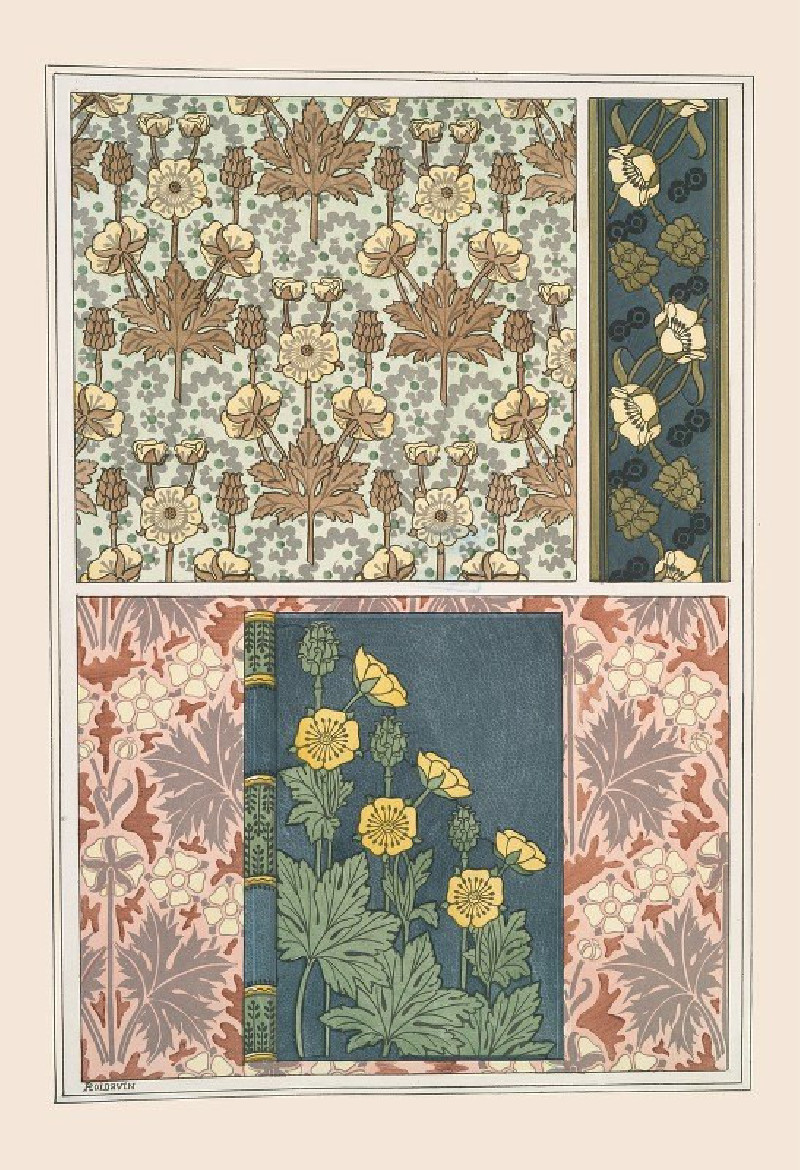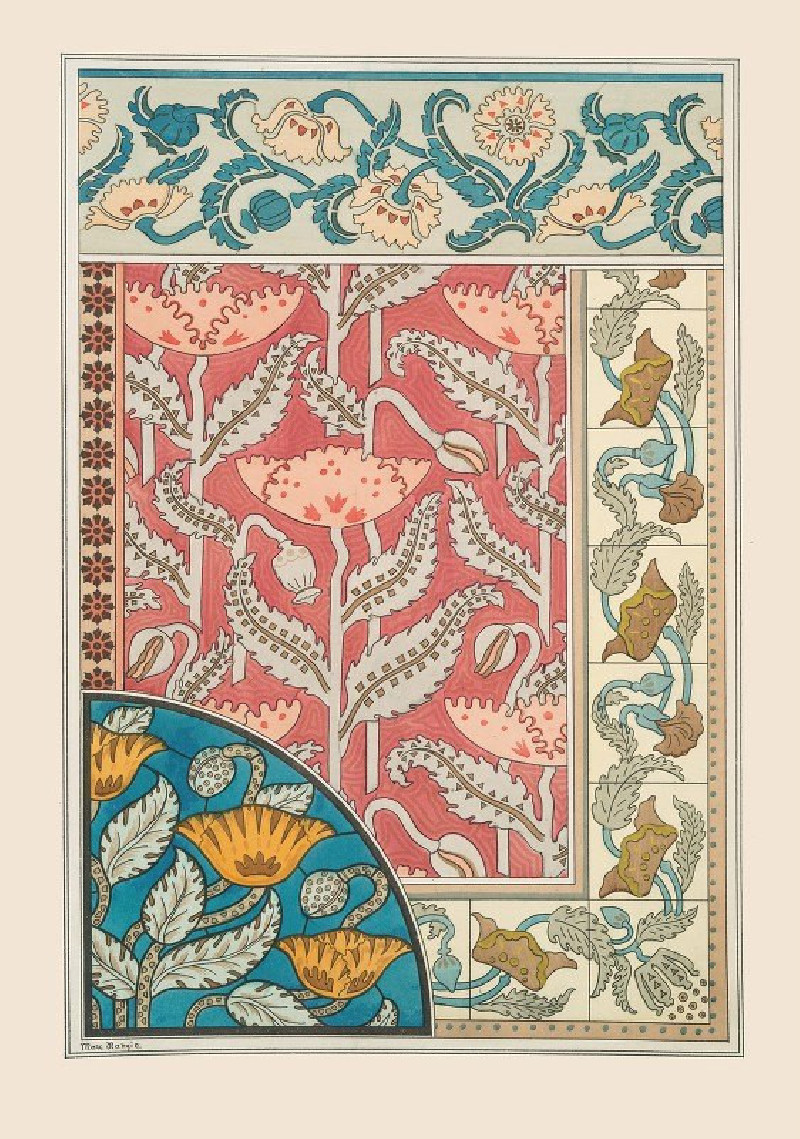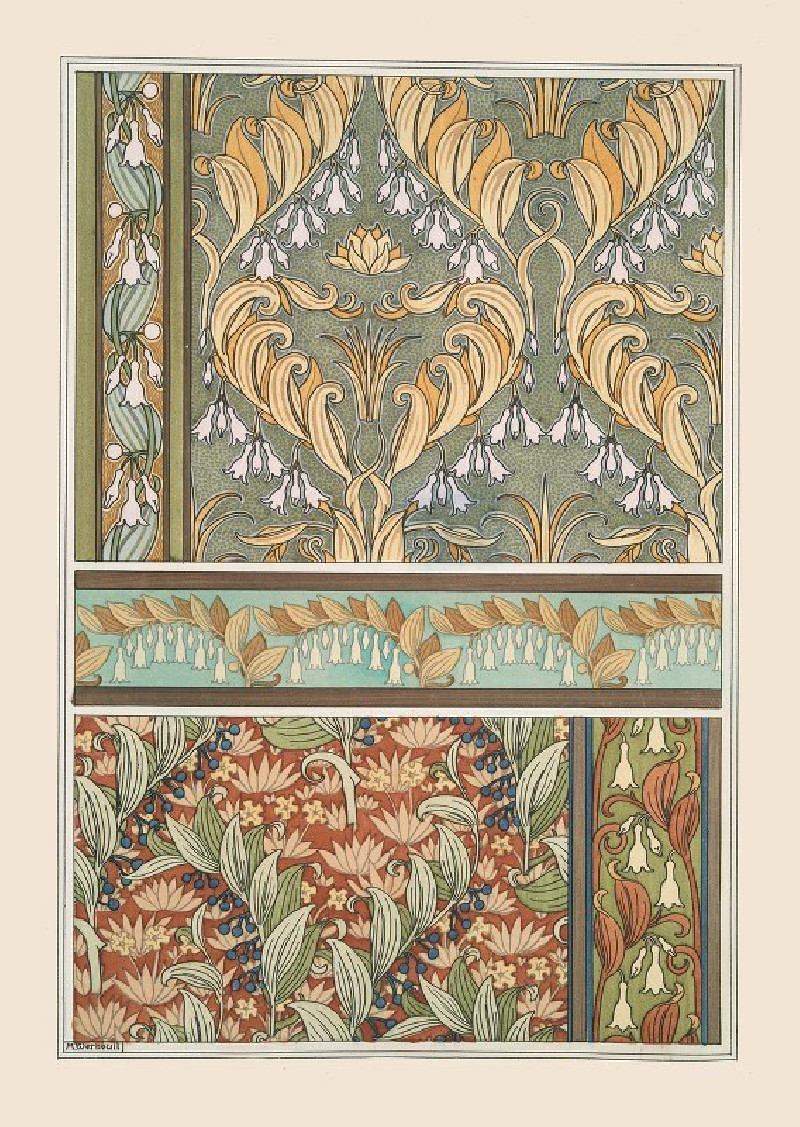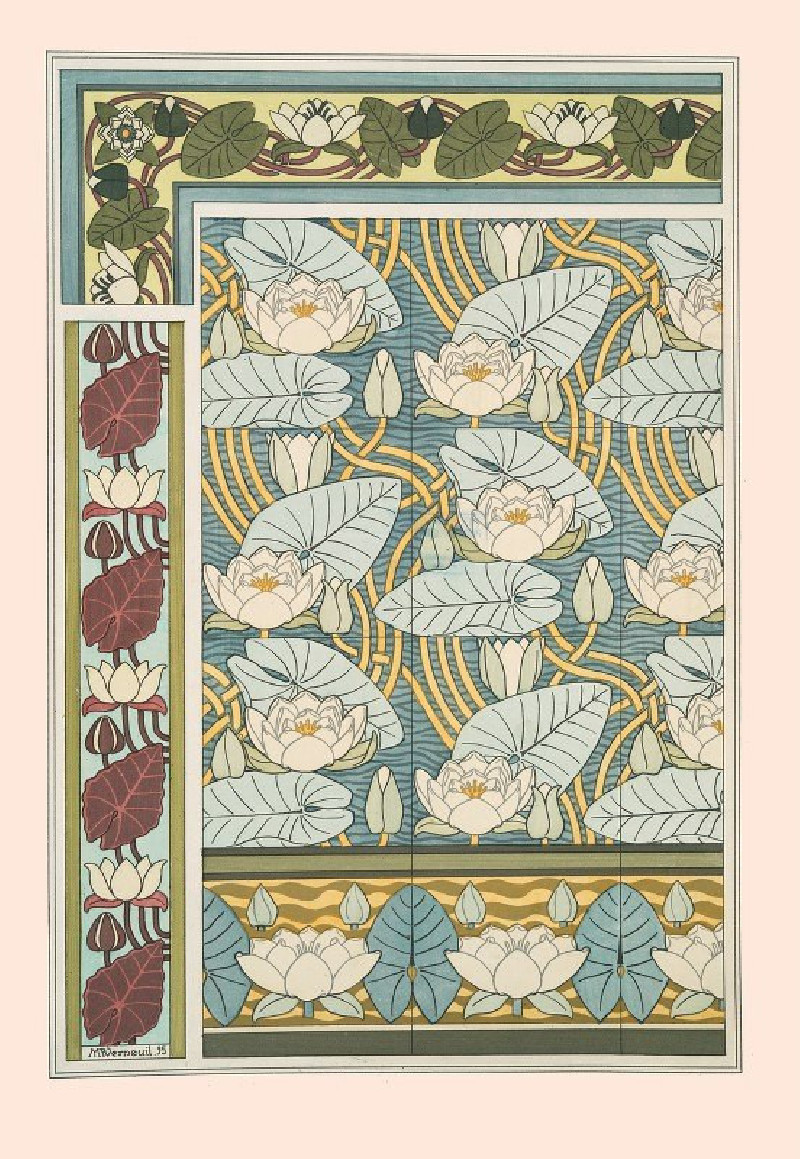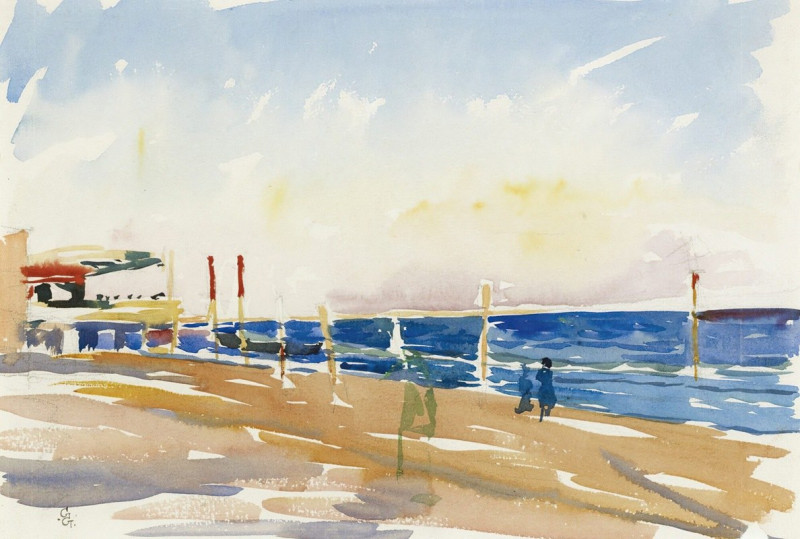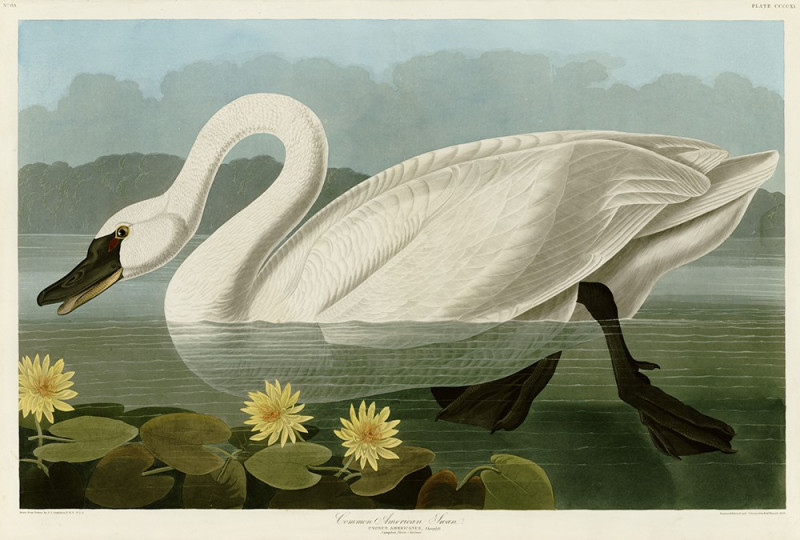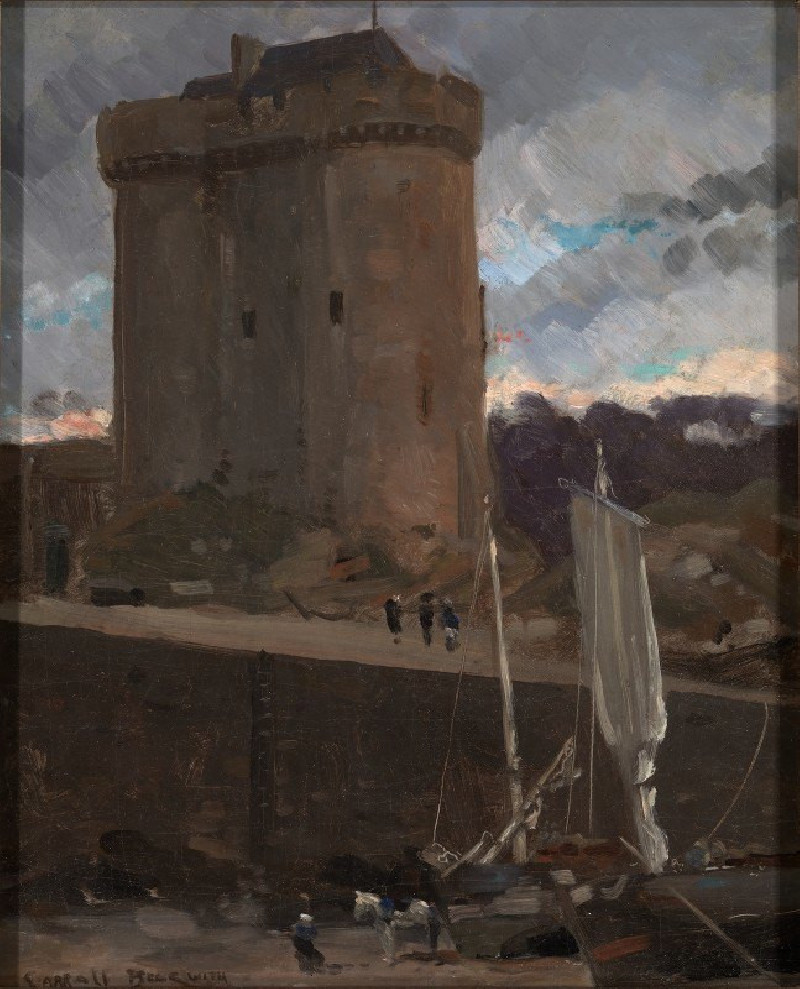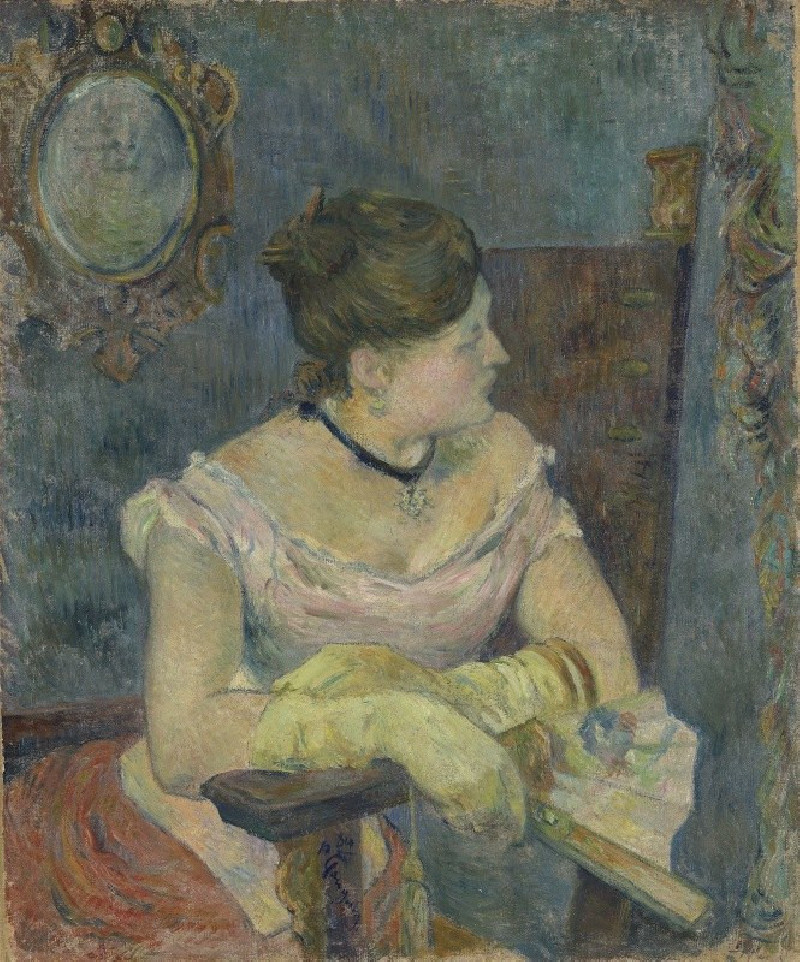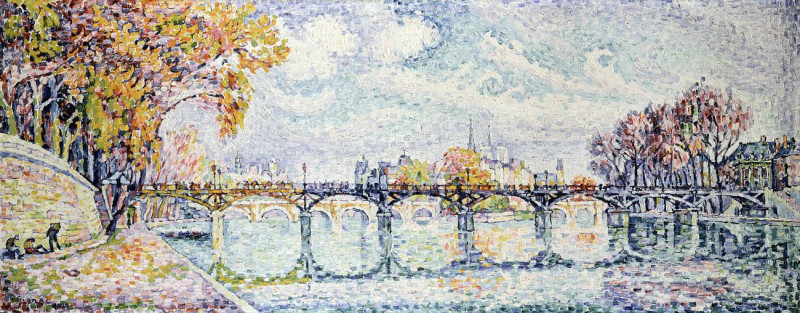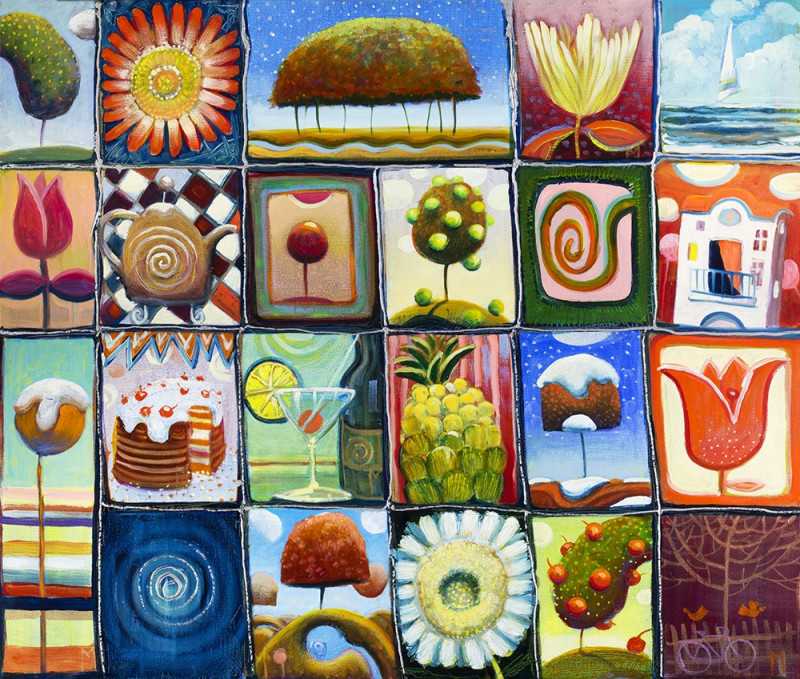Méduses et algues, vitrail. Cigales et lis, paons et cytise, bordures. (1897)
Technique: Giclée quality print
Recommended by our customers
More about this artwork
Welcome to a captivating exploration of Maurice Pillard Verneuil's exquisite work, "Méduses et algues, vitrail. Cigales et lis, paons et cytise, bordures" from 1897. This remarkable painting exemplifies Verneuil's mastery in the Art Nouveau style, showcasing intricate patterns and vibrant colours that harmonize to create a mesmerizing visual feast.The artwork is divided into multiple panels, each offering a unique thematic and stylistic composition. On the left, we encounter a panel filled with sinuous forms and deep blue hues, portraying jellyfish (méduses) floating amidst seaweed (algues), encapsulating the mysterious beauty of ocean life. The middle panels are adorned with delicate motifs of cicadas (cigales) and lilies (lis), peacocks (paons), and laburnum (cytise) integrated into elaborate borders. These natural elements are depicted with incredible attention to detail, their forms and textures elegantly intertwining.The choice of colours and the fluidity of lines are particularly striking, suggesting movement and a natural rhythm that pulses through the entire composition. Each segment of the painting works harmoniously with the others, yet stands out for its individual beauty, making "Méduses et algues, vitrail. Cigales et lis, paons et cytise, bordures" a testament to Verneuil's creative genius and his ability to capture the essence of nature through the Art Nouveau lens.This artwork not only invites viewers to appreciate its aesthetic elegance but also encourages a deeper reflection on the interplay between art and nature.
Delivery
Returns
Maurice Pillard Verneuil was a French artist and decorator in the Art nouveau movement. He was born in Saint-Quentin, France. Maurice Pillard Verneuil learned his trade from the Swiss designer Eugène Grasset. Maurice Pillard Verneuil then went on to become a well-known artist and designer. He was inspired by Japanese art and nature, particularly the sea. He is known for his contribution to the art deco movement and, in particular, his use of bold, floral designs in ceramic tiles, wallpapers and other furnishing textiles.

